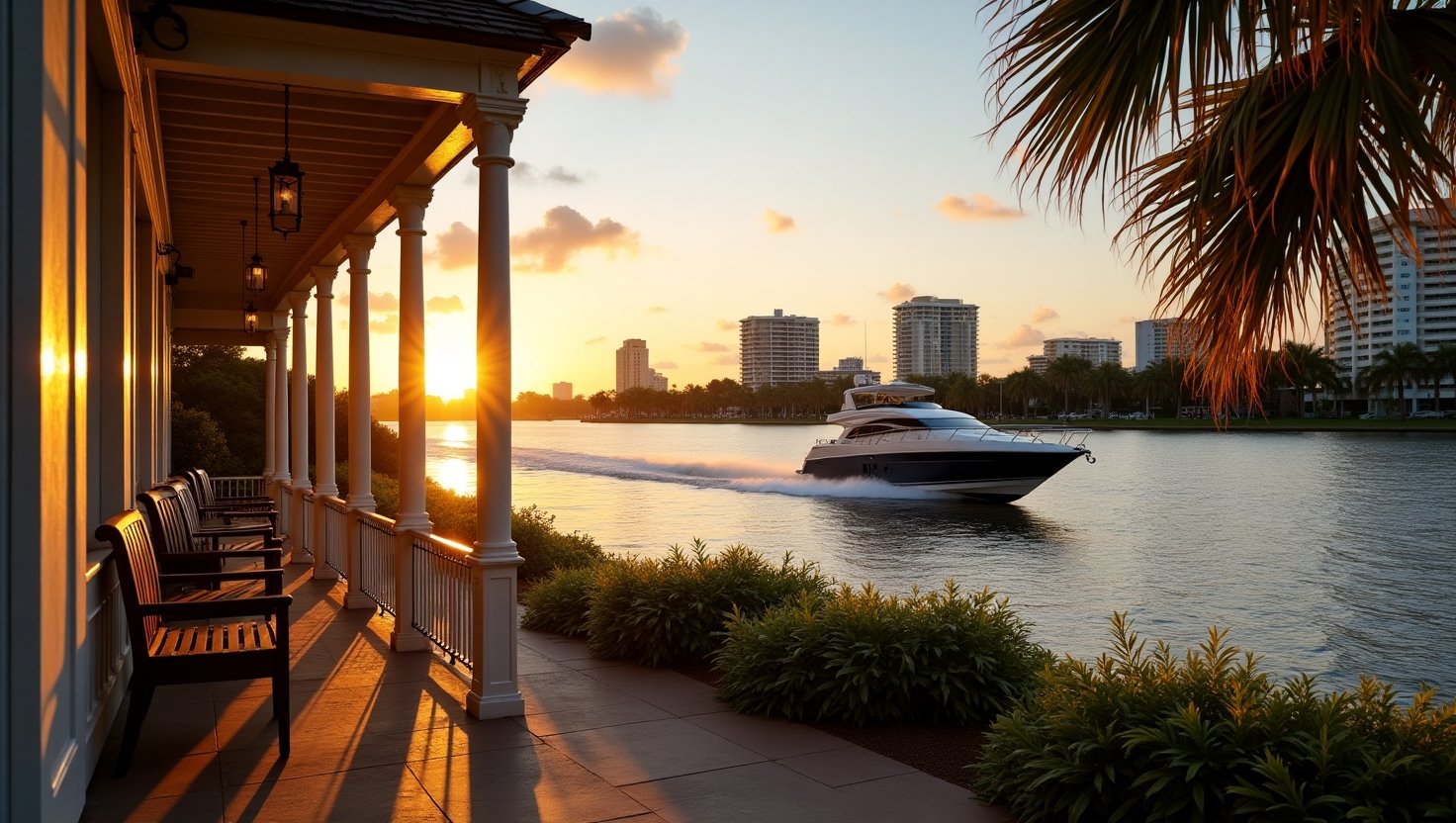Think, you’re strolling along a sun-dappled promenade, the Atlantic breeze weaving through swaying palms. Luxury yachts glide past on shimmering canals, and the energy is pure coastal chic. But beneath this vibrant surface lies a story etched by Seminole warriors, hardy pioneers, and bootleggers running rum through mangrove tunnels. Welcome to Fort Lauderdale Florida Verenigde Staten—a place where Gilded Age glamour and wild frontier spirit collide.
Forget just beaches and boats. Let’s uncover the soul of this iconic city.
The Birthplace: New River’s Untamed Frontier
Long before A1A’s buzz, the Tequesta and later the Seminole thrived here. Everything changed in 1838 when Major William Lauderdale built a stockade during the Seminole Wars. Imagine steamy jungles, skirmishes, and soldiers hacking paths through dense foliage—a far cry from today’s chic boutiques.
Why the river mattered:
- Trading Lifeline: The New River became a vital artery for settlers.
- Frank Stranahan’s Gambit: In 1893, this pioneer opened a trading post (now the Stranahan House Museum). Step inside Florida’s oldest surviving home—its creaky floors whisper tales of bartering with Seminoles and catastrophic freezes that nearly broke the town.
Boom, Bust & Bootleggers: Roaring Twenties Mayhem
Prohibition hit, and Fort Lauderdale’s maze of waterways became a smuggler’s paradise. Rumrunners dodged Coast Guard cutters under cover of darkness, fueling a lawless economy.
The architect who shaped paradise:
Enter Addison Mizner. After defining Palm Beach, he unleashed Mediterranean Revival magic here. Picture terracotta roofs, breezy courtyards, and casinos luring northern elites. Then—the 1926 hurricane and 1929 crash shattered the dream. Yet remnants like the Elbo Room bar (a former speakeasy) still stand, slinging beers since 1938.
WWII: When Sailors Saved the City
The war transformed Fort Lauderdale Florida Verenigde Staten into a strategic hub. The Naval Air Station trained thousands, including a young George H.W. Bush.
Echoes of the era:
- USCG Cutter SEBAGO: Moored at the International Swimming Hall of Fame, this vessel patrolled for U-boats.
- The Strip’s Origin: A1A exploded with bars and USO clubs catering to homesick sailors. That energy still pulses today.
Postwar Renaissance: Venice of America Takes Flight
Visionaries like Joseph Young dredged canals, plotting a “Venice of America.” Snowbirds flocked, Hollywood stars escaped, and spring break ignited (thanks to the film Where the Boys Are).
Iconic Landmarks That Define the Legacy
| Site | Era | Why It’s Unmissable | Hidden Gem Fact |
|---|---|---|---|
| Bonnet House Museum & Gardens | 1920s-1980s | Art-filled estate with whimsical architecture | Built by Birch’s son-in-law, an artist |
| King-Cromartie House | 1907 | Pioneer homestead with cracker-style design | Survived the 1926 hurricane |
| Fort Lauderdale History Center | Permanent Exhibits | Artifacts from Seminole tools to jazz age photos | See the “tin can tourist” camper |
| Hugh Taylor Birch State Park | 1940s | Donated by the reclusive millionaire himself | His mansion ruins hide in the woods |
Walking Through Time: Trails & Tales
Riverwalk’s Historic Core: Start at Stranahan House, wander past 1905 New River Inn (now a museum), and end at the Old Fort Lauderdale Village. Grab a key lime pie at Canyon Cafe—once a 1930s grocery.
Secret Canals: Kayak the Himmarshee Canal. Glide past million-dollar homes, then spot the 1920s Coontie flour mill ruins—where Seminoles once processed poisonous plants.
Beyond the Brochures: Forgotten Footprints
- Pioneer African American Sites: Discover Dillard High, a segregation-era beacon of excellence, or the Old Dillard Museum.
- The Ghost Tracks: Near the station, phantom train whistles echo the Florida East Coast Railway that jumpstarted the economy.
Your 3-Step History Detox
- Morning: Coffee at Stranahan House, then kayak New River.
- Afternoon: Picnic at Birch Park, find the mansion ruins.
- Evening: Sunset mojito at Elbo Room—toast the bootleggers.
FAQs
Q1: What’s the oldest building in Fort Lauderdale?
A: The Stranahan House (1901). It survived hurricanes, boom cycles, and served as a post office, community hall, and trading post.
Q2: Were pirates really active here?
A: Absolutely! Smugglers like “King” Charles Wade used hidden inlets during Prohibition. Rum Row was just offshore.
Q3: How did WWII change Fort Lauderdale?
A: The Naval Air Station brought 100,000+ servicemen. Many returned to settle, sparking the 1950s population boom.
Q4: Can I visit Seminole historical sites?
A: While most are sacred/unmarked, the Ah-Tah-Thi-Ki Museum (1hr west) offers profound insights into Seminole history.
Q5: Why is it called the “Venice of America”?
A: With over 300 miles of navigable waterways—more than Venice—engineers designed it for boat-centric living post-WWII.
Q6: Where can I see Gilded Age architecture?
A: Bonnet House is prime. Also, stroll Las Olas Boulevard’s early 20th-century buildings (now galleries and cafes).
Q7: Is Hugh Taylor Birch State Park historic?
A: Yes! Birch donated it to protect wilderness from development. His 1920s winter retreat’s foundation is still visible.
You May Also Like: An Idyllic Cape Cod Day Trip

